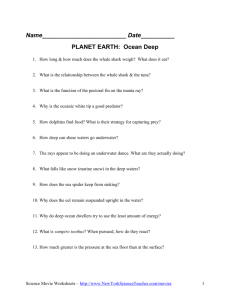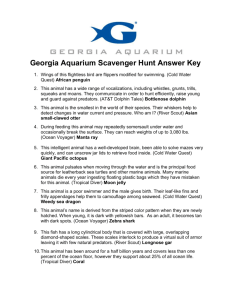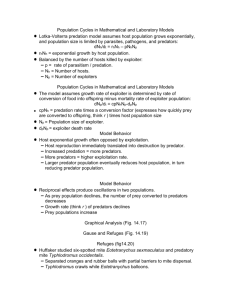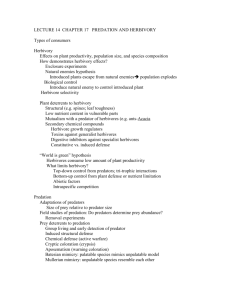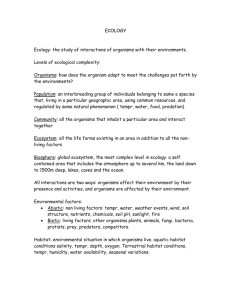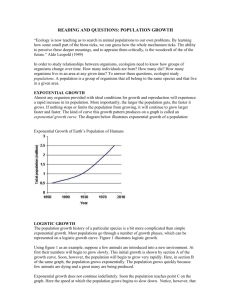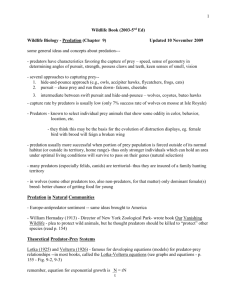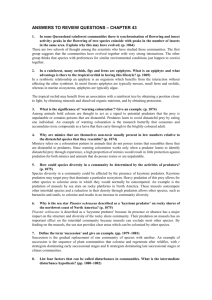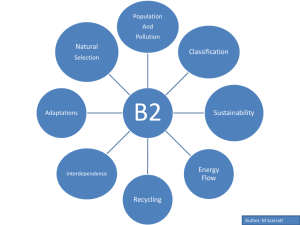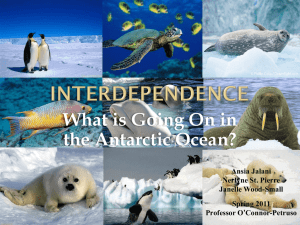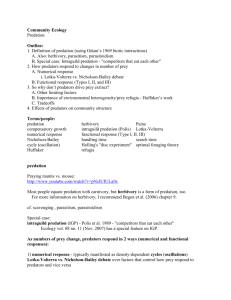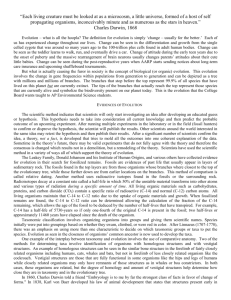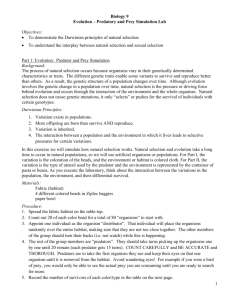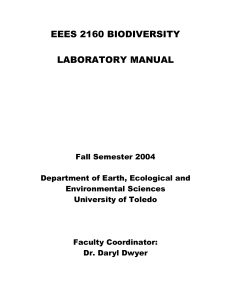Open Ocean Food Web and Ecotoxicology
advertisement
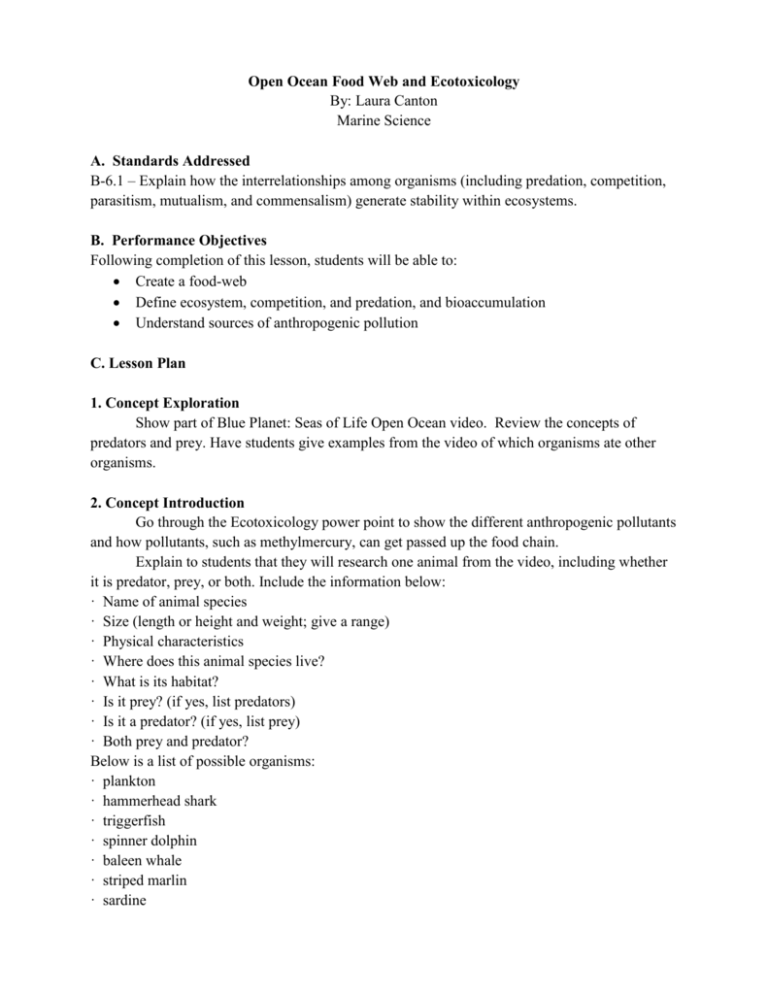
Open Ocean Food Web and Ecotoxicology By: Laura Canton Marine Science A. Standards Addressed B-6.1 – Explain how the interrelationships among organisms (including predation, competition, parasitism, mutualism, and commensalism) generate stability within ecosystems. B. Performance Objectives Following completion of this lesson, students will be able to: Create a food-web Define ecosystem, competition, and predation, and bioaccumulation Understand sources of anthropogenic pollution C. Lesson Plan 1. Concept Exploration Show part of Blue Planet: Seas of Life Open Ocean video. Review the concepts of predators and prey. Have students give examples from the video of which organisms ate other organisms. 2. Concept Introduction Go through the Ecotoxicology power point to show the different anthropogenic pollutants and how pollutants, such as methylmercury, can get passed up the food chain. Explain to students that they will research one animal from the video, including whether it is predator, prey, or both. Include the information below: · Name of animal species · Size (length or height and weight; give a range) · Physical characteristics · Where does this animal species live? · What is its habitat? · Is it prey? (if yes, list predators) · Is it a predator? (if yes, list prey) · Both prey and predator? Below is a list of possible organisms: · plankton · hammerhead shark · triggerfish · spinner dolphin · baleen whale · striped marlin · sardine · · · · · · · · · · · · manta ray surgeonfish yellowfin tuna spotted dolphin sailfish mackerel blue shark pilot whale sunfish jellyfish olive ridley turtle shearwater 3. Concept Application Have students put on nametags with their organism. Give every student a piece of string and form a circle. Start with the top predators, and tell them to connect with an animal they eat. Have them work their way down the food chain. They should form a complex web, with multiple people connecting to plankton. Then discuss how methylmercury gets passed up the food chain through plankton. Ask the students what would happen if a human eats one of the top predators. **Adapted from Discovery Education Lesson Plans: http://school.discoveryeducation.com/lessonplans/programs/BP_openocean/ Helpful Websites: · Sea World: Animal Information Database (see also “Animal Bytes”) http://www.seaworld.org/infobook.html · Ocean Oasis Field Guide http://www.oceanoasis.org/fieldguide/index.html · Ocean Animals http://mbgnet.mobot.org/salt/animals/index.htm · Ocean Realm: Sea Dwellers http://www.pbs.org/oceanrealm/seadwellers/index.html · National Aquarium in Baltimore: Species http://209.251.35.100/animals/species/index.html Assignment Discovery Lesson Plan · Enchanted Learning: Ocean Life http://www.EnchantedLearning.com/coloring/oceanlife.shtml


